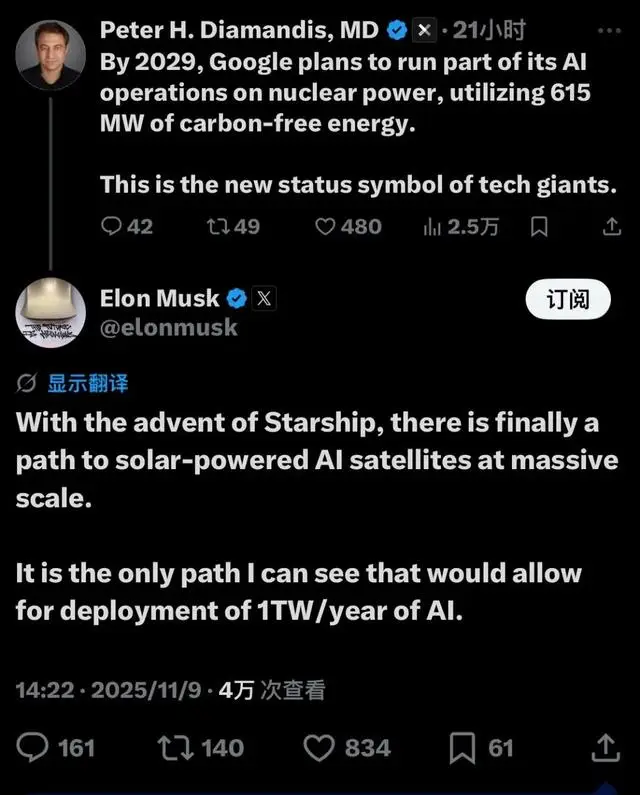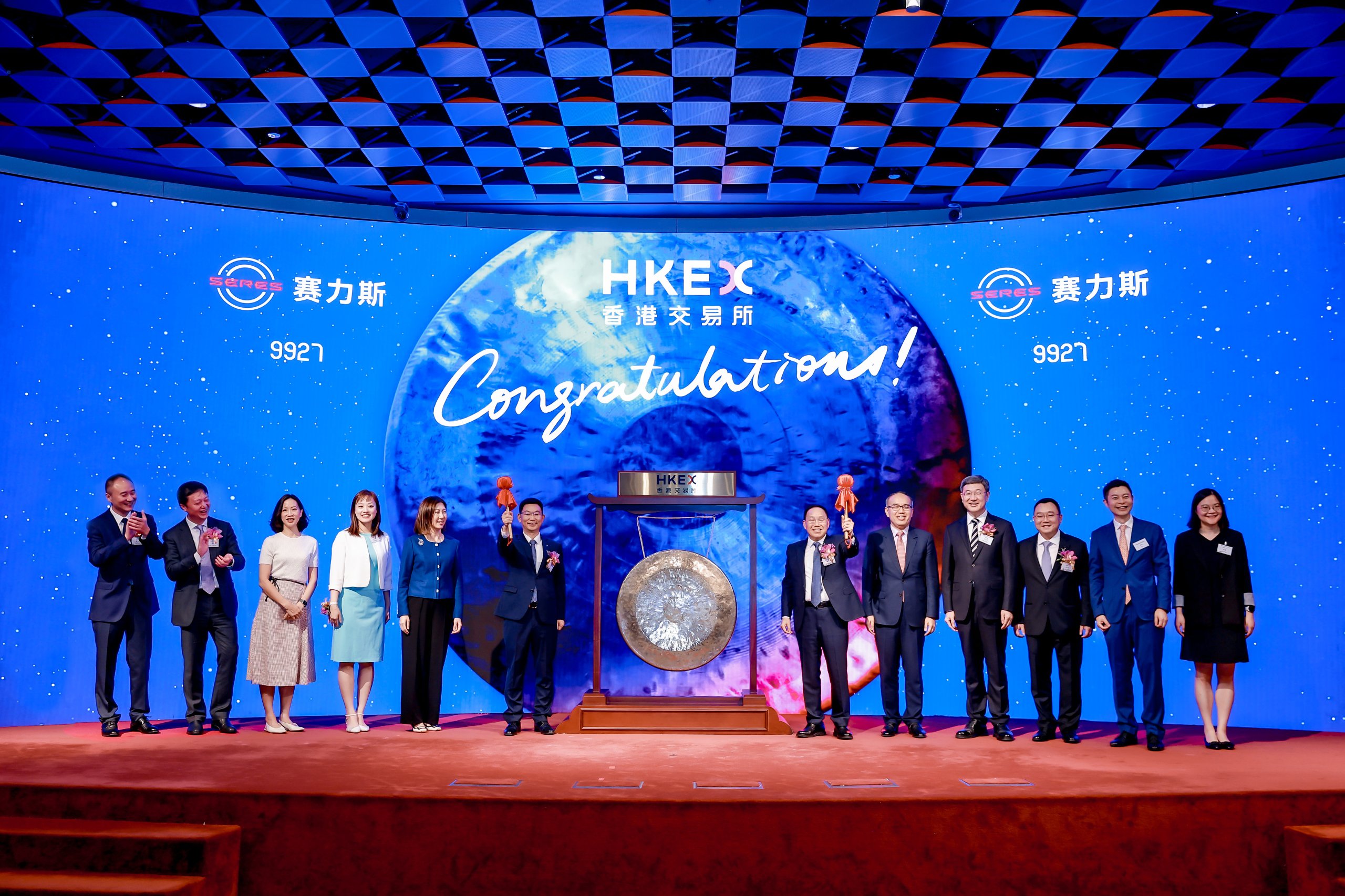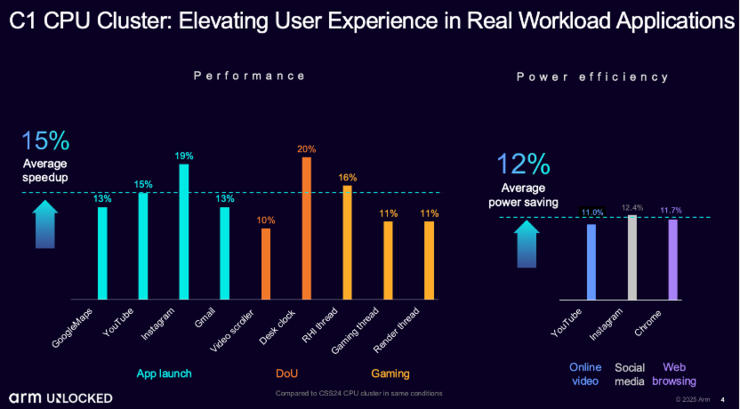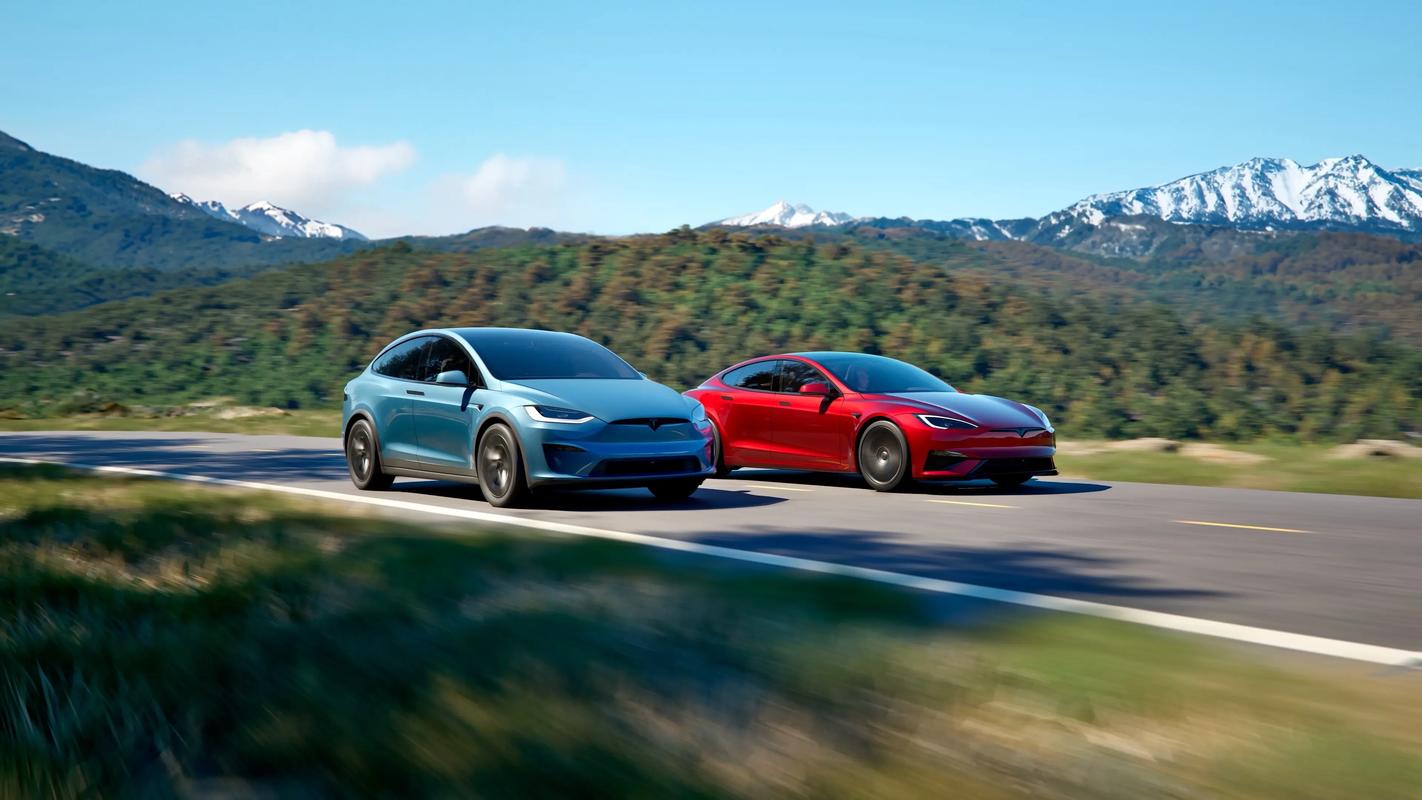On November 9, Elon Musk, the world’s richest person, wrote on X that “with the advent of Starship, the path to large-scale deployment of solar-powered AI satellites has finally opened. This is, I believe, the only viable way to deploy 1 terawatt (1 TW) of AI compute per year.”
Notably, this was his response to reports that Google plans to run part of its AI operations with nuclear power by 2029.
Earlier, Musk said SpaceX will build data centers in space. All it would take, he said, is scaling up Starlink V3 satellites equipped with high-speed laser links — and SpaceX will do that.

According to Yicai, power shortages have become a key bottleneck for building AI data centers. Consulting firm FTI Consulting predicts that U.S. data center energy demand will nearly double by 2027, and requests for large data-center power hookups have strained utilities and grid capacity.
Because terrestrial power is limited, placing data centers in space has become an option increasingly favored by Silicon Valley tech companies.
On November 2, U.S. company StarCloud successfully launched an experimental satellite carrying NVIDIA H100 chips and Google’s Gemini large model. The Starcloud-1 satellite weighs 60 kg, about the size of a small refrigerator, and is said to provide 100 times the GPU compute of previous space computing platforms. The company plans to eventually build a 5-gigawatt orbital data center equipped with very large solar arrays and radiators, roughly 4 kilometers in width and length.
StarCloud’s space data center would not need water cooling or dependence on batteries or backup power. StarCloud co-founder Philip Johnston said that nearly unlimited, low-cost renewable energy is available in space, and that the only environmental cost is launch; over its lifecycle a space data center would emit ten times less CO2 compared with powering an equivalent Earth-based data center.
According to Caixin, because AI data centers consume huge amounts of energy, Google has recently proposed putting its Tensor Processing Units (TPUs) on satellites fitted with solar panels to run around the Earth. These panels could generate power almost continuously and would be about eight times more efficient than comparable Earth-based panels.
This project is named “Project Suncatcher.” If it proceeds, Google would build the first space data center. Google also said it plans to work with Planet to launch a few prototype satellites before 2027 to test hardware in orbit.
It is worth noting that in May 2025, Guoxing Aerospace and Zhejiang Lab jointly used a Long March 2D rocket at the Jiuquan Satellite Launch Center to successfully launch the world’s first space computing satellite constellation. The satellites reached their planned orbits and the mission was a complete success.
The space computing satellite constellation is the inaugural constellation of Guoxing Aerospace’s “Star Compute” initiative and also the first constellation of Zhejiang Lab’s “Three-Body Computing Constellation.” The launch included 12 computing satellites carrying an 8-billion-parameter space-based model, achieving “compute to orbit, on-orbit networking, and models in space.” These satellites can perform in-orbit processing and inference on L0–L4 level satellite data, and will carry out tasks such as cross-orbit laser access and astronomical science observations.
Also reported by Securities China, a conference call memo circulated within the industry on the evening of November 6. The memo noted that to date the U.S. has launched and networked more than 10,000 satellites (Starlink), which played an incalculable and irreplaceable role in the Russia–Ukraine conflict. It predicted that China will accelerate its launch pace in the next year or two. “If you missed this year’s several-fold surge in AI GPUs, welcome to catch the first year of major commercial aerospace development next year.”
On November 7, A-share commercial aerospace stocks were strong all day: Shanghai Hugong hit the daily limit early in trading, Aerospace Intelligent Equipment rose more than 6%, Putian Technology and other concept stocks rallied late in the session, and Qianzhao Optoelectronics hit a 20%limit up (daily limit).



















暂无评论内容